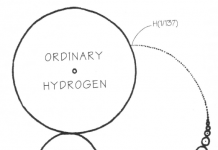Tom Konrad CFA
Yieldcos are companies which own clean energy assets and use the cash flows from them to deliver a high level of current dividend yield and (in some cases) the promise of significant dividend growth. Investors like them because yield is scarce in the current low interest rate environment.
While investors like the relatively high yield offered by yield cos, they are only starting to discriminate between yield cos on the basis of current and future dividends. Four months ago, I published the following chart and noted that the yield cos with the highest current and expected yields were the most attractive . They were (from most to least attractive): “TransAlta Renewables [TSX:RNW, OTC:TRSWF], Hannon Armstrong [NYSE:HASI], Capstone Infrastructure [TSX:CSE, OTC: MCQPF], Brookfield Renewable Energy Partners [NYSE:BEP, TSX:BEP], Primary Energy Recycling [TSX:PRI,OTC:PENGF], and Innergex Renewable Energy [TSX:INE, OTC:INGXF].”
. They were (from most to least attractive): “TransAlta Renewables [TSX:RNW, OTC:TRSWF], Hannon Armstrong [NYSE:HASI], Capstone Infrastructure [TSX:CSE, OTC: MCQPF], Brookfield Renewable Energy Partners [NYSE:BEP, TSX:BEP], Primary Energy Recycling [TSX:PRI,OTC:PENGF], and Innergex Renewable Energy [TSX:INE, OTC:INGXF].”
In the four months since then, the six yield cos I listed have produced an average total return of 3.9%, compared to the remaining five, which lost an average of 5.3%, even after the payment of dividends. These relative moves make current pricing slightly more rational, but a mere 9% relative move is not nearly enough to correct the mispricing in this new and still misunderstood sector of clean energy investing.
Below, I will present an updated version of the same chart, accounting for dividend increases and price moves in the meantime, along with a couple corrections about plans for dividend increases at Abengoa Yield (NASD:ABY) and NextEra Energy Partners (NYSE:NEP). Note that while correcting these mistakes would have made ABY and NEP relatively more attractive, they were overpriced relative to my six picks, just less overpriced than I thought. NEP remains relatively overpriced today. I also incorrectly showed Pattern Energy Group (NASD:PEGI, TSX:PEG) as a US-listed company when, in fact, it is also listed in Canada. I’ve corrected these mistakes in the following chart:

The most attractive yield cos are the ones shown in the upper right. The vertical axis shows current yield, while the horizontal axis shows the expected increase in yield over the next two year, based on management targets. The changes in bubble size are in part due to increases in market capitalization due to secondary offerings, and partly due to my decision to use full market capitalization, as opposed to just the market capitalization of the stock which is held by the public.
Ignoring the green London-listed yield cos which are almost impossible for a US investor to purchase, the two most attractive yield cos remain Hannon Armstrong (HASI) and TransAlta Renewables (RNW). Neither has changed much in price, but Hannon Armstrong has become significantly more attractive because of an increased dividend.
Two other notable moves are Pattern (PEGI)) and Primary Energy Recycling (PRI.) Pattern has become more attractive after a 21% decline in its stock price (resulting in a 27% corresponding increase in yield.) I’ve dropped Primary Energy from the new chart because the company is in the process of being taken private and has suspended its dividend in the meantime.
What will happen in the next four months? If the market continues its slow moves to price yield cos more rationally, it’s a good bet that the three most attractive yield cos (Hannon Armstong, TransAlta Renewables, and Capstone Infrastructure) will out perform the three least attractive yield cos. Those are Terraform Power (TERP), NextEra Energy Partners (NEP), and NRG Yield (NYLD.)
I’m invested accordingly.
Disclosure: Long HASI, BEP, PEGI, RNW, CSE, INE, PRI, TRIG. Short NYLD.
DISCLAIMER: Past performance is not a guarantee or a reliable indicator of future results. This article contains the current opinions of the author and such opinions are subject to change without notice. This article has been distributed for informational purposes only. Forecasts, estimates, and certain information contained herein should not be considered as investment advice or a recommendation of any particular security, strategy or investment product. Information contained herein has been obtained from sources believed to be reliable, but not guaranteed.




